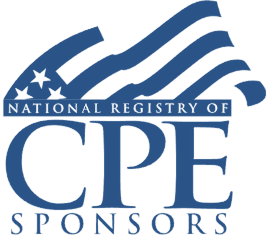Welcome! Save 30% on all CLE, CPE, and Professional Skills webinars, plus 15% off any annual pass with code CYBER2025
About the Course
Introduction
This webinar will review the benefits of alternative apportionment for multistate companies struggling with inequitable state tax liability calculations using statutory allocations and apportionment methods. The panelist will explain which companies benefit most from alternative apportionment, review the process for alternative apportionment in specific states, and highlight the most beneficial methods to use in specific scenarios.
Description
Following Wayfair, and with more states moving to single-factor sales apportionment, more businesses are finding relief by utilizing alternative apportionment methods. Statutory formulas for apportioning income often yield disproportionate results for particular companies. These formulas, developed with manufacturers and tangible property sellers in mind, can result in apportion distortion for service-oriented and SaaS companies.
All states offer some type of apportionment relief. The taxpayer requests permission to use an alternative method from the relative tax authority and the burden of proof remains with the taxpayer to show that the statutory methods are distortive and, therefore, unfair. In single-factor apportionment states, taxpayers have successfully argued that the three-factor apportionment method is more determinative in certain situations. Other taxpayers have used transfer pricing studies and separate accounting as acceptable methods to establish more reasonable determinations of state income tax liability. SALT advisers working with multistate businesses must understand the nuances of alternative apportionment to ensure businesses are not burdened with more than their fair share of state income tax.
Listen as George W. Rendziperis, JD, Managing Director, State and Local Tax at M+D Consulting, reviews common scenarios where alternative apportionment can provide a fairer tax allocation and explain how to apply for alternative apportionment in certain states.
Presented By

Mr. Rendziperis provides state and local tax advice to companies in the financial services, private equity, real estate, technology, manufacturing, oil and gas, and service sectors. He has more than 15 years of experience advising clients on controversy, litigation, planning, implementation and compliance issues related to income and franchise tax, sales and use tax, excise and property taxes, unclaimed property, and tax incentives and credits.
-
BARBRI is a NASBA CPE sponsor and this 110-minute webinar is accredited for 2.0 CPE credits.
Date + Time
- event
Wednesday, November 8, 2023
- schedule
1:00 p.m. ET./10:00 a.m. PT
- Benefits of alternative apportionment
- Requesting relief
- Alternative methods
- State nuances
- Common scenarios
- Recent rulings
The panelist will cover these and other important issues:
- The benefits of alternative apportionment for SaaS and service-oriented companies
- Common alternative methods used in states that use single-factor sales apportionment
- Applying for an alternative apportionment method in specific states
- Recent state rulings concerning alternative apportionment
Learning Objectives
After completing this course, you will be able to:
- Identify industries most likely subject to suffer from unfair apportionment in certain states
- Determine nuances of applying for alternative apportionment in particular states
- Ascertain which businesses benefit most by choosing alternative apportionment
- Recognize common alternative apportionment methods
- Decide when requesting alternative apportionment could benefit specific businesses
- Field of Study: Taxes
- Level of Knowledge: Intermediate
- Advance Preparation: None
- Teaching Method: Seminar/Lecture
- Delivery Method: Group-Internet (via computer)
- Attendance Monitoring Method: Attendance is monitored electronically via a participant's PIN and through a series of attendance verification prompts displayed throughout the program
- Prerequisite: Three years+ business or public firm experience preparing complex tax forms and schedules, supervising other preparers or accountants. Specific knowledge and understanding of SALT taxation, nexus and apportionment as it applies to multi-state businesses.

BARBRI, Inc. is registered with the National Association of State Boards of Accountancy (NASBA) as a sponsor of continuing professional education on the National Registry of CPE Sponsors. State boards of Accountancy have final authority on the acceptance of individual courses for CPE Credits. Complaints regarding registered sponsons may be submitted to NASBA through its website: www.nasbaregistry.org.

BARBRI CE webinars-powered by Barbri-are backed by our 100% unconditional money-back guarantee: If you are not satisfied with any of our products, simply let us know and get a full refund. Contact us at 1-800-926-7926 .
Unlimited access to premium CLE courses:
- Annual access
- Available live and on-demand
- Best for attorneys and legal professionals
Unlimited access to premium CPE courses.:
- Annual access
- Available live and on-demand
- Best for CPAs and tax professionals
Unlimited access to premium CLE, CPE, Professional Skills and Practice-Ready courses.:
- Annual access
- Available live and on-demand
- Best for legal, accounting, and tax professionals
Unlimited access to Professional Skills and Practice-Ready courses:
- Annual access
- Available on-demand
- Best for new attorneys
Related Courses

Commonly Overlooked State Tax Credits and Incentives: R&D, Investment, Jobs Tax Credits, and More
Tuesday, January 20, 2026
1:00 p.m. ET./10:00 a.m. PT

Combining Cost Segregation With Section 1031 Exchanges: A Significant Tax-Savings Strategy
Tuesday, January 27, 2026
1:00 p.m. ET./10:00 a.m. PT

Why LIFO, Why Now? Turn Tariffs Into Tax Savings in 2025
Friday, December 12, 2025
1:00 p.m. ET./10:00 a.m. PT

State Depreciation Adjustments: Handling Conformity Issues
Available On-Demand



